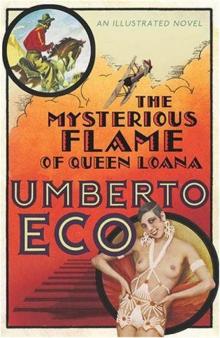- Home
- Umberto Eco
Chronicles of a Liquid Society
Chronicles of a Liquid Society Read online
Contents
* * *
Title Page
Contents
Copyright
Foreword
The Liquid Society
Turning Back the Clock
Freestyle Catholics and sanctimonious secularists
Have we really invented so much?
Full speed backward!
I remember, I remember
Being Seen
Wave ciao ciao to the camera
God is my witness that I’m a fool . . .
I tweet, therefore I am
The loss of privacy
The Old and the Young
The average lifespan
Fair is foul, and foul is fair?
Thirteen years misspent
Once upon a time there was Churchill
A generation of aliens
Online
My email doubles
How to elect the president
The hacker is crucial to the system
Too much of the Internet? But in China . . .
Here’s a good game
The textbook as teacher
How to copy from the Internet
What’s the point of having a teacher?
The fifth estate
A further note
Dogmatism and fallibilism
Marina, Marina, Marina
I urge you to be brief
On Cell Phones
More thoughts on the cell phone
Swallowing the cell phone
On photography
Evolution: all with just one hand
The cell phone and the queen in “Snow White”
On Conspiracies
Where’s the deep throat?
Conspiracies and plots
Fine company
Don’t believe in coincidences
The conspiracy on conspiracies
On Mass Media
Radiophonic hypnosis
There are two Big Brothers
Roberta
The mission of the crime story
Bin Laden’s allies
Going to the same place
Mandrake, an Italian hero?
Are viewers bad for television?
Give us today our daily crime
Maybe Agamemnon was worse than Bush
High medium low
“Intellectually speaking”
Suspects behaving badly
Shaken or stirred?
Too many dates for Nero Wolfe
Unhappy is the land
Time and history
Forms of Racism
Women philosophers
Where do you find anti-Semitism?
Who told women to veil themselves?
Husbands of unknown wives
Proust and the Boche
From Maus to Charlie
On Hatred and Death
On hatred and on love
Where has death gone?
Our Paris
Religion and Philosophy
Seers see what they know
European roots
The lotus and the cross
Relativism?
Chance and Intelligent Design
The reindeer and the camel
Watch it, loudmouth . . .
Idolatry and iconoclasm lite
The cocaine of the people
The crucifix, almost a secular symbol
Those strangers, the Three Kings
Mad about Hypatia
Halloween, relativism, and Celts
Damned philosophy
Evasion and secret redress
The holy experiment
Monotheisms and polytheisms
A Good Education
Who gets cited most?
Political correctness
Thoughts in fair copy
Meeting face-to-face
The pleasure of lingering
On Books, Etc.
Is Harry Potter bad for adults?
How to protect yourself from the Templars
The whiff of books
Here’s the right angle
Journey to the center of Jules Verne
Corkscrew space
On unread books
On the obsolescence of digital media
Festschrift
The Catcher in the Rye fifty years on
Aristotle and the pirates
Lies and make-believe
Credulity and identification
Who’s afraid of paper tigers?
From Stupidity to Folly
No, it’s not pollution, it’s impurities in the air
How to get rich on other people’s suffering
Miss World, fundamentalists, and lepers
Return to sender
Give us a few more deaths
Speaking with license
Conciliatory oxymorons
The human thirst for prefaces
A noncomrade who gets it wrong
Saying sorry
The Sun still turns
What you mustn’t do
The miraculous Mortacc
Joyce and the Maserati
Napoleon never existed
Are we all mad?
Idiots and the responsible press
Read More from Umberto Eco
About the Author
Connect with HMH
Copyright © 2016 by La nave di Teseo Editore, Milano
Translation copyright © 2017 by Richard Dixon
All rights reserved
For information about permission to reproduce selections from this book, write to [email protected] or to Permissions, Houghton Mifflin Harcourt Publishing Company, 3 Park Avenue, 19th Floor, New York, New York 10016.
First published in Italian as Pape Satàn Aleppe. Cronache di una società liquida
First published in Italy by La nave di Teseo, 2016
www.hmhco.com
Library of Congress Cataloging-in-Publication Data is available.
ISBN 978-0-544-97448-7
Cover design by Brian Moore
Author photograph © Augusto Casasoli/A3/Contrasto/Redux
eISBN 978-0-544-9745-7
v1.1017
Foreword
I began writing a regular column called “La bustina di Minerva” for the Italian weekly magazine L’Espresso in 1985, first every week, then every other week. Its title referred to a brand of matchbook that had two white spaces inside that were useful for brief jottings, and so I intended my articles to be short notes and digressions on ideas that came to mind. They were generally inspired by topical events, but not always, since I regarded it as topical that one evening I had decided, maybe, to reread a page of Herodotus, a Grimms’ fairy tale, or a Popeye comic.
A number of earlier articles appeared in How to Travel with a Salmon and Other Essays (1994), and others, written before 2000, were published in Turning Back the Clock: Hot Wars and Media Populism (2007). But between 2000 and 2015 I had written more than four hundred articles—roughly twenty-six a year—and felt that some of these could be salvaged.
I think that most of the “Bustina di Minerva” pieces collected in this book can be seen as reflections on aspects of this “liquid society” of ours, about which I wrote in a more recent article, placed here at the beginning of the book.
Though many repetitions have been cut, some remain, since several topics came up with worrying regularity over those fifteen years, causing me to return and dwell on certain themes that were still disturbingly relevant.
UMBERTO ECO
The Liquid Society
The idea of “liquid” modernity or society comes from Zygmunt Bauman. Those who want to understand the various implications of this concept may find it he
lpful to read State of Crisis, where Bauman and Carlo Bordoni discuss this and other topics.
The liquid society begins to take shape with the movement known as postmodernism, an umbrella term that brings together a great variety of phenomena, from architecture to philosophy to literature, not always in a coherent fashion. Postmodernism signaled the crisis of “grand narratives,” each of which had claimed that one model of order could be superimposed on the world; it devoted itself to a playful or ironic reconsideration of the past, and was woven in various ways with nihilistic tendencies. But postmodernism, according to Bordoni, is also on the way out. It was temporary in character, we have passed through it without noticing, and it will be studied one day like pre-Romanticism. It served to point out an event that was happening and represented a sort of ferry from modernity to a present that still has no name.
Among the characteristics of this nascent present Bauman includes the crisis facing the state: what freedom do nation-states retain when faced with the power of supranational entities? We are witnessing the disappearance of something that used to ensure individuals could resolve the various problems of our time in a homogeneous fashion. This crisis has led to a collapse of ideologies, and therefore of political parties, and to a general call for a sharing of values that allowed individuals to feel part of something that understood their needs.
The crisis in the concept of community gives rise to unbridled individualism: people are no longer fellow citizens, but rivals to beware of. This “subjectivism” has threatened the foundations of modernity, has made it fragile, producing a situation with no points of reference, where everything dissolves into a sort of liquidity. The certainty of the law is lost, the judiciary is regarded as an enemy, and the only solutions for individuals who have no points of reference are to make themselves conspicuous at all costs, to treat conspicuousness as a value, and to follow consumerism. Yet this is not a consumerism aimed at the possession of desirable objects that produce satisfaction, but one that immediately makes such objects obsolete. People move from one act of consumption to another in a sort of purposeless bulimia: the new cell phone is no better than the old one, but the old one has to be discarded in order to indulge in this orgy of desire.
The collapse of ideologies and political parties: it has been suggested that political parties have become like taxis taken by vote-controlling mob leaders or Mafia bosses, who choose them casually, according to what is on offer—politicians can change party allegiance without creating any scandal. It’s not just people: society itself is living in an increasingly precarious condition.
What can replace this liquefaction? We don’t yet know, and the interregnum will last for quite a long time. Bauman notes that a typical feature of the interregnum, once the faith in salvation from above, from the state, or from revolution is gone, is indignation. Such indignation knows what it doesn’t want, but not what it does. And I’d like to mention that one of the problems the police raise in relation to Black Bloc protest movements is that they can no longer be labeled, as used to be the case with anarchists, Fascists, or the Red Brigades. Such movements act, but no one knows when they will act, or in what direction. Not even they know.
Is there any way of coming to terms with liquidity? There is, and it involves an awareness that we live in a liquid society that, to be understood and perhaps overcome, requires new instruments. But the trouble is that politicians and a large part of the intelligentsia haven’t yet understood the implications of this phenomenon. For the moment, Bauman is still a “voice of one crying in the wilderness.”
2015
Turning Back the Clock
Freestyle Catholics and sanctimonious secularists
When people refer to the great spiritual transformations that marked the end of the twentieth century, they immediately start talking about the collapse of ideologies, which is undeniable, and has blurred traditional distinctions between right and left. But the question remains whether the fall of the Berlin Wall was the cause of this collapse or just one of its consequences.
Think of science. People wanted science to be a neutral territory, ideal for progress shared by both liberals and socialists: the only difference was how this progress was to be managed and in whose favor—still exemplified by The Communist Manifesto of 1848, which lauded capitalist triumphs only to conclude, more or less, that “we too now want these things.” A liberal was someone who believed in technological advance, whereas a reactionary preached the return to tradition and the unspoiled nature of once upon a time. The cases of “revolution back to the past,” like that of the Luddites who sought to destroy machinery, were marginal—they had no real influence on the net division between the two positions.
This division began to go wrong in 1968, a time that mixed together Stalinists in love with steel, flower power, workerism (which expected automation to bring about the destruction of employment), and prophets of liberation through the drugs of Don Juan. It fell apart at a time when third-world populism became a common standard for both the far left and the far right, and now we find ourselves confronted with a movement like that of Seattle, a meeting point for neo-Luddites, radical environmentalists, ex-workerists, lumpen and spearhead workers, in the rejection of cloning, of the Big Mac, of transgenic and nuclear technologies.
A significant transformation came about in the opposition between the religious and the secular worlds. For thousands of years, the spirit of religion was associated with a distrust of progress, rejection of the world, doctrinal intransigence. The secular world, on the other hand, looked optimistically upon the transformation of nature, the flexibility of ethical principles, the fond rediscovery of “other” forms of religion and of primitive thought.
There were, of course, those believers, such as Teilhard de Chardin, who appealed to “worldly realities,” to history as a march toward redemption, while there were plenty of secular doom merchants, with the negative utopias of Orwell and Huxley, or the kind of science fiction that offered us the horrors of a future dominated by hideous scientific rationality. But it was the task of religion to call to us at the final moment, and the task of secularism to sing hymns in praise of the locomotive.
The recent gathering of enthusiastic young papal groupies shows us the transformation that has taken place under the reign of Pope John Paul II. A mass of youngsters who accept the Catholic faith but, judging from the answers they recently gave in interviews, are far distant from neurotic fundamentalism, are willing to make compromises over premarital relationships, contraceptives, even drugs, and certainly when it comes to clubbing; meanwhile, the secular world moans about noise pollution and a New Age spirit that seems to unite neo-revolutionaries, followers of Monsignor Milingo, and sybarites devoted to Oriental massage.
This is just the start. We have plenty of surprises in store.
2000
Have we really invented so much?
The following advertisement probably appeared on the Internet, but I don’t know where, since it arrived by email. It’s a modest proposal for the sale of something entirely new, Built-in Orderly Organized Knowledge, whose initials spell out BOOK.
No wires, no battery, no electronic circuits, no switches or buttons, it is compact and portable—you can even use it while you’re sitting in an armchair by the fire. It’s a sequence of numbered sheets of recyclable paper, each of which contains thousands of bits of information. These sheets are held together in the correct sequence by an elegant device called a binding.
Each page is scanned optically and the information is registered directly in the brain. There is a “browse” control that allows you to pass from one page to another, either forward or back, with a single flick of the finger. By using the “index” feature you can immediately find the information you want on the exact page. You can also buy an accessory called a “BOOKmark,” which enables you to return to where you left off in the previous session, even if the BOOK has been closed.
The ad ends with various details about this inn
ovative device and also announces the availability of the Portable Erasable-Nib Cryptic Intercommunication Language Stylus (PENCILS). Not only is it a nice piece of humor, but it also provides the answer to many anxious questions about the possible demise of the book with the advance of the computer.
There are many objects that, once invented, cannot be further improved, such as the cup, the spoon, the hammer. When Philippe Starck decided to change the shape of the lemon squeezer he produced a magnificent object, but it lets the pips fall into the glass, whereas the old-fashioned squeezer holds them with the pulp. I was annoyed the other day, in class, to find I had to use an expensive new electronic machine that projects hazy images—the old luminous blackboard, or even the ancient overhead projector, does a better job.
As the twentieth century draws to a close, I wonder whether in fact we have invented so many things—so many new things—in recent years. The objects we use from day to day were all invented in the nineteenth century. Here are some of them: the train (though the steam engine dates from the eighteenth century), the car and the oil industry that came before it, propeller-driven steamships, reinforced concrete, the skyscraper, the submarine, underground railways, the dynamo, the turbine, the diesel engine, the airplane, the typewriter, the gramophone, the Dictaphone, the sewing machine, the refrigerator, canned food, pasteurized milk, the cigarette lighter and the cigarette, Yale security locks, the elevator, the washing machine, the electric iron, the fountain pen, the eraser, blotting paper, the postage stamp, the pneumatic tube, the water closet, the electric bell, the electric fan, the vacuum cleaner (1901), the safety razor, the folding bed, the barber’s chair and swivel office chair, friction and safety matches, the raincoat, the zipper, the safety pin, fizzy drinks, the bicycle with inner-tube tires, wheels with steel spokes and chain transmission, the omnibus, the electric tram, the elevated railroad, cellophane, celluloid, artificial fibers, department stores to sell all this stuff, and—please note—electric lighting, telephone, telegraph, radio, photography, and cinema. Charles Babbage invented a calculating machine capable of doing sixty-six additions per minute, and we are therefore partway to the computer.

 Baudolino
Baudolino The Name of the Rose
The Name of the Rose Chronicles of a Liquid Society
Chronicles of a Liquid Society Inventing the Enemy: Essays
Inventing the Enemy: Essays Foucault's Pendulum
Foucault's Pendulum How to Travel With a Salmon & Other Essays
How to Travel With a Salmon & Other Essays Numero zero
Numero zero The Island of the Day Before
The Island of the Day Before UMBERTO ECO : THE PRAGUE CEMETERY
UMBERTO ECO : THE PRAGUE CEMETERY On the Shoulders of Giants
On the Shoulders of Giants Misreadings
Misreadings Six Walks in the Fictional Woods
Six Walks in the Fictional Woods The Mysterious Flame Of Queen Loana
The Mysterious Flame Of Queen Loana The Prague Cemetery
The Prague Cemetery On Literature
On Literature Lost structure
Lost structure